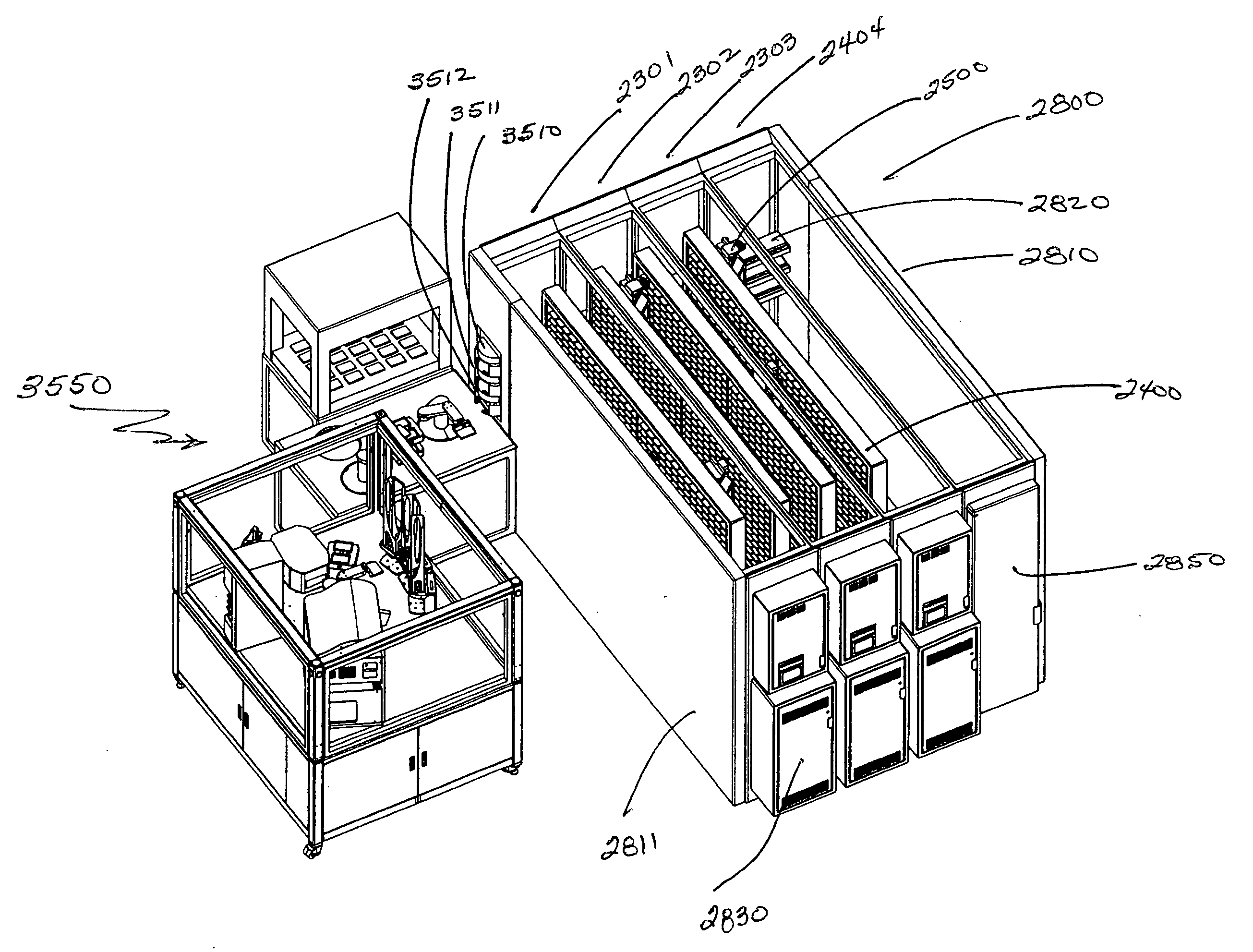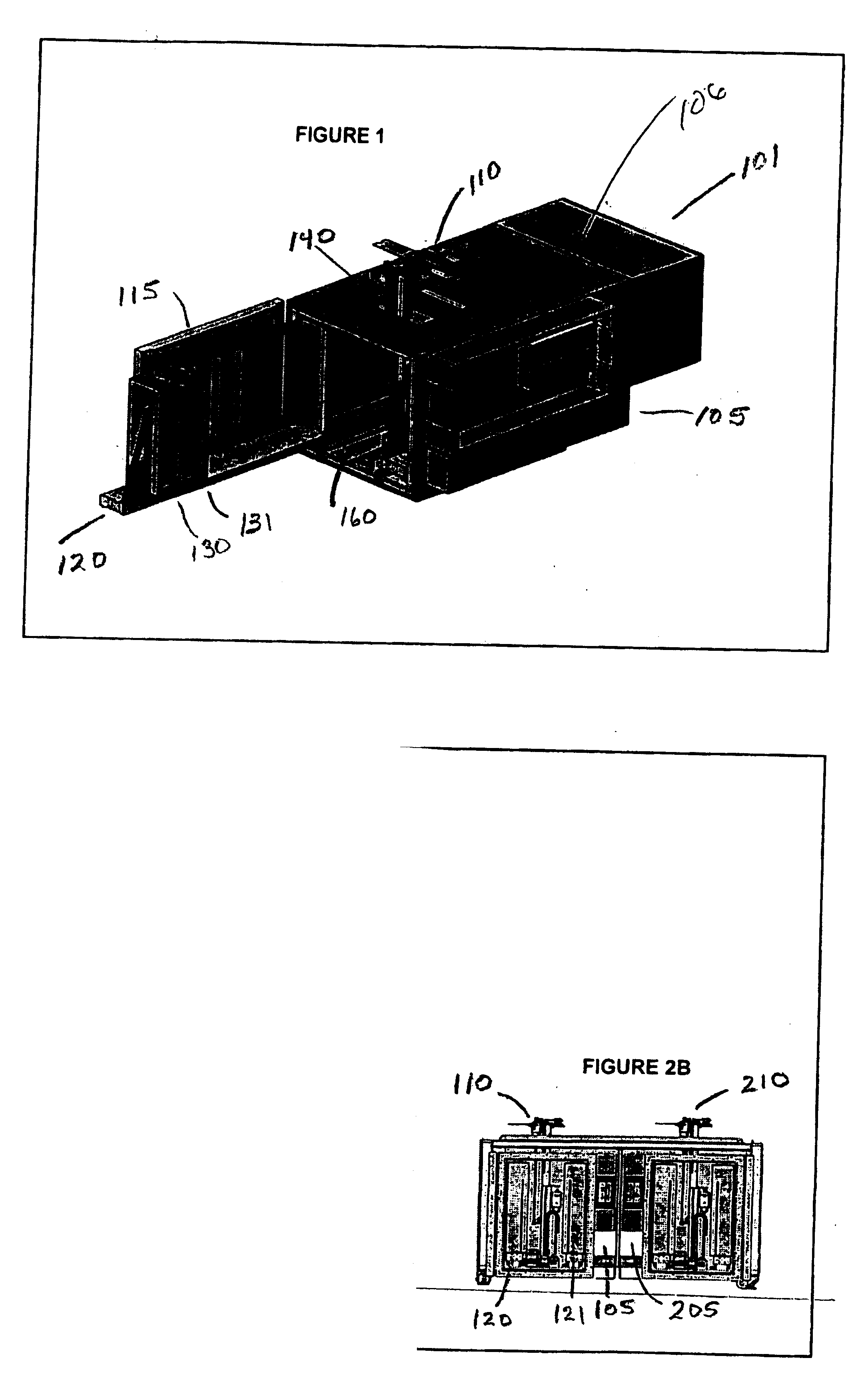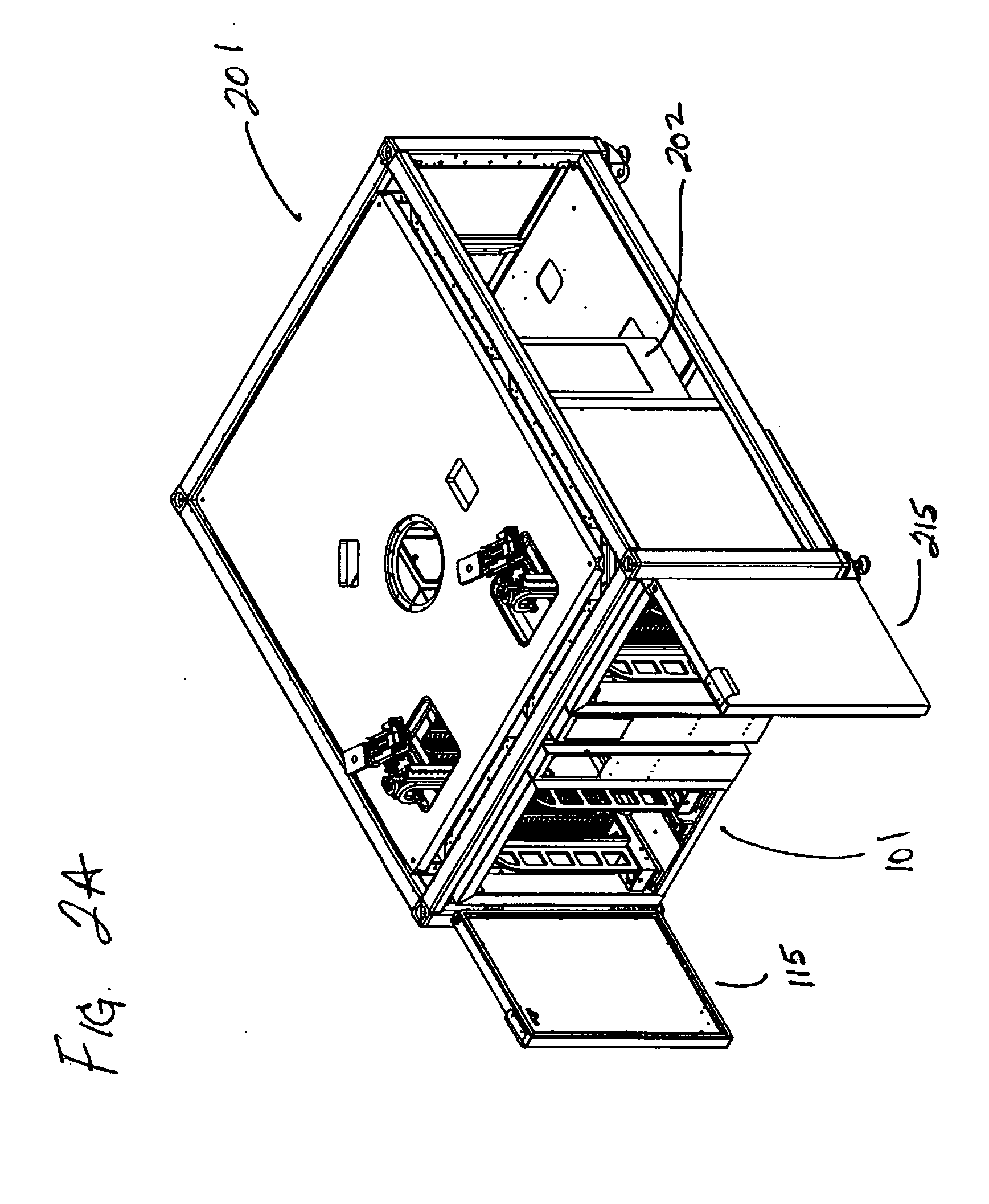Environmental control incubator with removable drawer and robot
a robot and incubator technology, applied in the field of environmental control incubators, can solve the problems of productivity limitation, reliability is the major problem that plagues, and the stated specifications are not always meaningful, and achieve the effect of final compactness of the system
- Summary
- Abstract
- Description
- Claims
- Application Information
AI Technical Summary
Benefits of technology
Problems solved by technology
Method used
Image
Examples
Embodiment Construction
[0048]FIG. 1 shows incubator 101, electronics enclosure 105, extended robot 110, door 115, sliding shelf 120 and plate racks 130 and 131, second door 140, open, and base plate 160 to which two shelves, 120 and 121 (not shown) and five axis robot 110 are attached. FIGS. 2A and 2B are perspective and front views of two incubators 101 and 202 mounted in a mirror image arrangement 201, showing electronics 105 and 205 mounted on the interior surface, extended robots 110 and 210, doors 115 and 215. FIG. 3 is a higher detail drawing of incubator 101 with shelf 120 in the open position showing rack 130 with rack interface 340. FIG. 4 is a drawing of an incubator bottom portion showing construction details of two shelves 120 and 421 and lower robot detail 410. FIG. 5 is a detail drawing of an incubator shelf 120 showing space for up to seven racks such as 130. A handle 550 is configured as a support element for the shelf and racks. FIG. 6 is a detail drawing of an incubator rack 130 showing ...
PUM
| Property | Measurement | Unit |
|---|---|---|
| temperatures | aaaaa | aaaaa |
| volume | aaaaa | aaaaa |
| angle | aaaaa | aaaaa |
Abstract
Description
Claims
Application Information
 Login to View More
Login to View More - R&D
- Intellectual Property
- Life Sciences
- Materials
- Tech Scout
- Unparalleled Data Quality
- Higher Quality Content
- 60% Fewer Hallucinations
Browse by: Latest US Patents, China's latest patents, Technical Efficacy Thesaurus, Application Domain, Technology Topic, Popular Technical Reports.
© 2025 PatSnap. All rights reserved.Legal|Privacy policy|Modern Slavery Act Transparency Statement|Sitemap|About US| Contact US: help@patsnap.com



